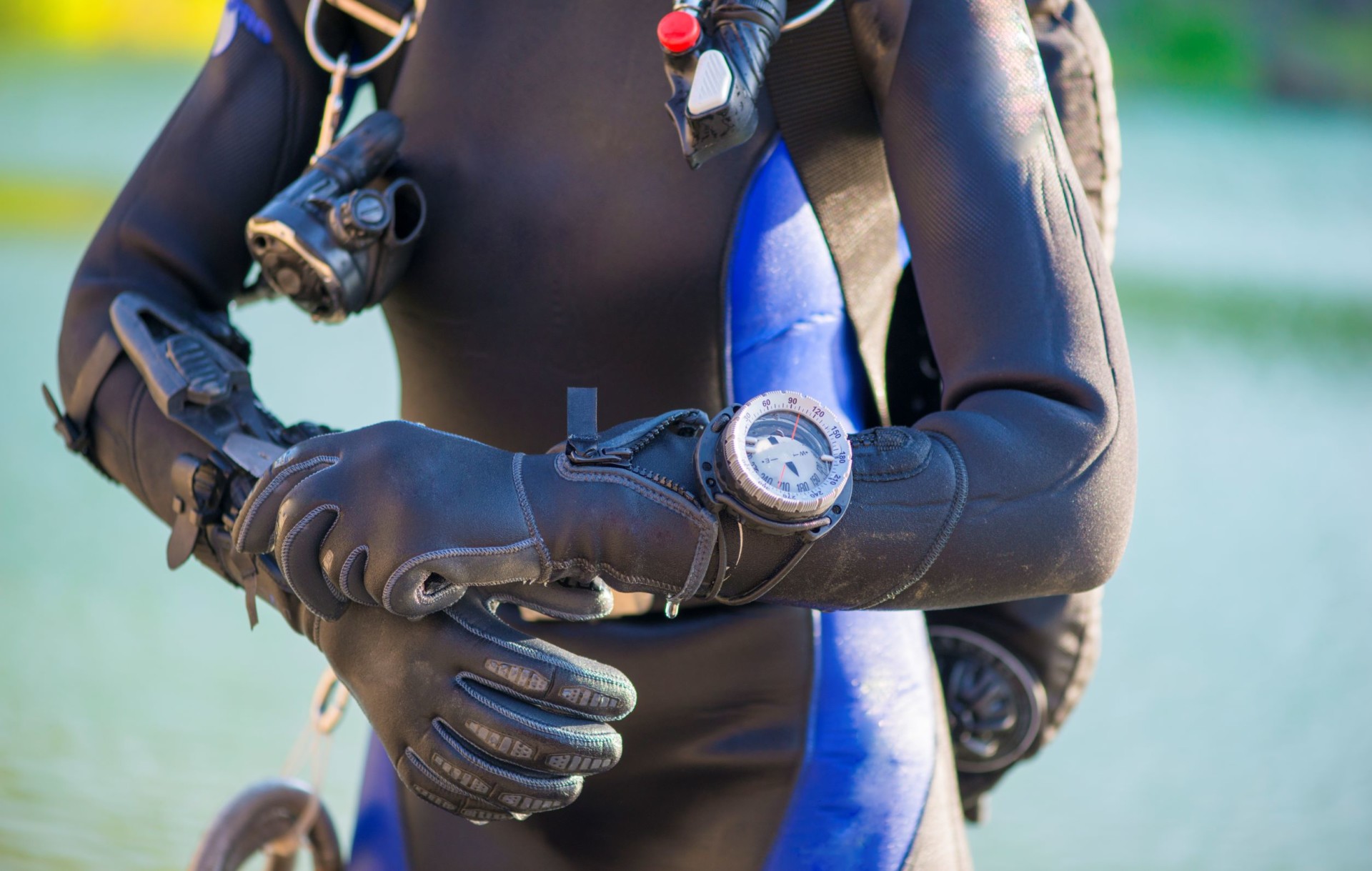There was a time when a self-respecting scuba diver wouldn’t even get close to the water without having a sizable commando-style blade strapped around their leg.
But in recent years, as diving has become more of a mass, organized activity, it’s probably fair to say that carrying a dive knife or other cutting device has become less common.
If you learned and have continued to dive only in clear tropical waters, you might never have carried a knife before, and so you could be asking if you really need to invest in one.
Yes, we think you should consider taking a suitable knife or cutting device with you on your next dive.
While the frequency you need it will depend on the dives you’re doing, especially the conditions and environment underwater, there are often even minor opportunities for using a suitable cutting device.
We’re going to consider the many varied uses of a good dive knife.
Together, we will see – amongst other things – that they can help with cleaning up underwater garbage, and can even end up being a lifesaver for you or your buddy if you become entangled.
So let’s take a look, and discover the ideal underwater cutting device for your next scuba dive.
- What Are the Benefits of Bringing a Dive Knife?
- Are There Downsides to Diving With a Knife?
- What Dive Knives Are Not for (Myths Debunked)
- Do Many Divers Carry a Knife When Diving?
- Do You Really Need a Dive Knife?
- Do Certain Dives Require a Knife?
- How to Decide Whether You Should Dive With a Knife
- Where Should a Dive Knife Be Placed?
- Are There Laws Regulating Dive Knives?
- How Are Dive Knives Different?
- Conclusion
- You Might Also Like…
Disclosure: this post contains affiliate links (clearly marked with ), which means we may earn a commission if you buy something through them, at no additional cost to you.
What Are the Benefits of Bringing a Dive Knife?
A scuba dive knife or cutting tool offers numerous benefits underwater that vary from safety to environmental efforts, wreck diving, assisting trapped animals, or even underwater work.
Entanglement
Thankfully entanglement underwater is exceptionally uncommon for recreational scuba divers.
But in the unlikely event of it happening, having a suitable cutting tool allows you to assist yourself or your buddy.
Underwater ropes, abandoned fishing nets as well as aquatic plant life all present entanglement risks to divers.
The most common entanglement hazard found nowadays is plastic mono-filament fishing line.
This line can be tough to see, so it’s entirely possible to get caught in it, even in clear waters.
It can get quickly wrapped around dive equipment or your legs or arms.
Mono-filament line is impossible to break by hand, and so if you do get caught in it, a cutting device is essential.
Underwater Cleanup
As well as being a risk to divers, fishing line or net is also a hazard to aquatic life when it’s abandoned underwater.
As responsible divers, we should always remove it if we see it, and often to do this, we need a dive knife.
If fishing lines, nets, plastic bags, or other debris are caught around sensitive life such as coral, then just trying to pull it off by hand isn’t an option.
The material will often get snagged or could cause damage if pulled away by hand, and so we need to use a knife or other cutter to remove it carefully and safely.
Helping Trapped Animals
If you should happen to come across an animal that has been trapped by debris underwater, then having a suitable knife or cutting tool with you can allow you to assist its release.
Wreck Diving
If you’re going to be diving into a shipwreck, then carrying a knife is essential.
Wrecks can offer many opportunities for a diver to get entangled or stuck.
Old cables or ropes can be hazardous and can easily get snagged around a diver or their equipment.
No sensible diver would ever enter a wreck without a suitable dive knife to use if needed.
Cave Diving
Cave diving, like wreck diving, has an increased risk of diver entanglement due to the closed environment.
It could be from underwater plant growth or from the guide lines that are laid into caves to help divers find the exit by touch in the event of low visibility.
No one should be diving into a cave system without suitable cutting devices and, needless to say, not without the proper training and experience.
Underwater Work
For minor underwater jobs, the right dive knife can be used to make life easy.
From scraping the underside of a boat or freeing rope wrapped accidentally around its propeller, having the right dive knife with you can make a big difference.
Are There Downsides to Diving With a Knife?
Depending on the knife you choose, they might be a little cumbersome, and you’ll have to think carefully about where is the best place for you to carry it (more on that below).
Large knives add extra weight to you underwater, and you’ll need to experiment to stay balanced.
But one of the most significant downsides to carrying a knife underwater is the maintenance that it will need after every dive.
Without careful cleaning and drying, even the highest quality knives can quickly rust and degrade from saltwater.
Most will need frequent sharpening as the most rust-resistant metals unfortunately don’t stay sharp for long.
You don’t want to discover that it’s as helpful as a blunt butter knife when you need your cutter in an emergency.
It can also be tricky to find the right knife that will cover you for every job, and it might be necessary to choose from other types of cutting tools like shears or line cutters to address every eventuality.
However, these issues are pretty easy to overcome.
The wide variety of designs that are now available means that you can usually find a knife that can cope with most scenarios.
What Dive Knives Are Not for (Myths Debunked)
Let’s get it straight once and for all: a dive knife isn’t a weapon for fighting off animals underwater.
The best scuba diving knife or cutting tool has a wide range of uses, but attack or defense isn’t one of them.
It’s a fact that the vast majority of the rare aquatic life injuries that divers suffer are caused by the animal defending itself.
If you exhibit sensible behavior underwater, then it’s improbable that you’re going to suffer any injury while passively watching life go about its business.
You might be thinking that you could use a knife to prevent an (extremely unlikely) underwater shark attack.
A shark showing overly inquisitive or aggressive behavior can be discouraged via recommended methods that are all safer and more likely to be successful than resorting to using a knife.
If you should foolishly use a knife on a shark, then it is highly likely that you’ll end up worse, having caused the animal to defend itself in the only way it can.
Do Many Divers Carry a Knife When Diving?
It depends a lot on the kind of diving that people are doing.
If you’re the kind of person that only tends to dive on holiday in clear tropical waters as part of an organized, guided group, then you might consider that there’s no need to carry a knife with you.
As we’ve suggested, even in these environments, it is sadly possible these days to often come across underwater debris or an errant piece of fishing line, and a knife or cutting tool can come in helpful to do your part to help keep the ocean clean.
But it is fair to say that most divers that fall into this holiday diving category don’t often carry knives.
The other type of diver, who perhaps likes to dive just as a buddy pair, or dives in more challenging waters with poorer visibility, is more likely to carry a knife.
These divers recognize that they’re more likely to come across circumstances that they might need a knife for their own or their buddy’s safety.
Do You Really Need a Dive Knife?
As we’ve seen, there are numerous circumstances where you might need a knife or cutting device underwater.
For your safety and for potentially doing your bit for the environment, we think carrying a knife is an excellent idea for all divers.
Relatively cheap line cutters and small knives are available now, meaning that every diver can carry at least some kind of tool without too much expense or it being too cumbersome.
Of course, it is reasonable if you’re diving in clear tropical waters as part of a guided group dive to consider if you need the extra weight when traveling as well as the purchase cost.
But in general, we think carrying something is a sensible and practical idea for all divers.
Do Certain Dives Require a Knife?
The situations where we would advise carrying a knife without fail would be anywhere there is a likely increased risk of entanglement or a need for a buddy team’s self-sufficiency.
These could include:
- Wreck diving
- Cave diving
- Diving in low visibility where hazards might not be seen easily
- Diving in an area known for fishing
- Clean-up dives
- Any dive where divers are diving as independent buddy pairs.
How to Decide Whether You Should Dive With a Knife
Consider the area you’re going to be diving in and if you’re reasonably likely to come across hazards where a knife could be needed to help you or your buddy out.
If you’re diving as part of an organized group, you can ask the divemaster if knives are needed or helpful to carry.
If you think that you will come across circumstances where you might need a knife for removing underwater debris, consider your skills to do this and stay safe and not cause further damage to the environment.
Removing fishing lines or debris around corals requires sufficient diving skills and buoyancy prowess not to create the danger of the diver entangling themselves or causing further damage.
Where Should a Dive Knife Be Placed?
If a knife is to be of use in the event of a diver getting entangled, it needs to be located somewhere where it can be reached with either hand just in case one is trapped.
For this reason, technical divers will always carry two cutting devices so that they can be sure that one is always in reach no matter what occurs.
Long knives can be strapped to the inside of your calf, where they are generally out of the way and won’t get snagged themselves readily.
Smaller knives can be located on the forearm or wrist or commonly are fixed to the BCD shoulder straps.
Take the time to try out the best position for you and make sure that you can quickly and safely remove the knife from its sheath when you’re in your scuba equipment.
Are There Laws Regulating Dive Knives?
It’s worth checking out the regulations in the area that you’re going to be diving in, as in some places, a cutting device is mandatory, while in others, knives are actually banned.
You’ll also need to consider the general local laws regarding carrying knives outside of a diving context.
It’s widespread for there to be laws about carrying knives about your person, so traveling to and from the dive site, you should keep your knife inside a dive bag at all times.
There are also often age-related laws regarding carrying and purchasing knives to be aware of.
When you’re traveling by air, remember that knives won’t be allowed inside hand baggage, and so they’ll need to be checked in.
Many airlines and countries also limit the size of the knife that can be carried even in check baggage, so make sure you check in advance if you like to dive with a large blade.
How Are Dive Knives Different?
Blade Material
The most important consideration for a dive knife is the material that the blade is made from.
Scuba diving knives need to be high-grade stainless steel or titanium, or they will quickly rust from saltwater exposure even if they’re rinsed well after the dive.
Remember that the most rust-resistant materials will, unfortunately, lose their sharpness quickly, so they need to be checked and sharpened regularly.
Some knives and cutters have replaceable blades, while others will need a sharpening stone that’s usually not included with the knife.
Either way, make sure that you have the means to keep the knife sharp or that replacements are readily available, and consider packing them for your trip.
Blade Design
Dive knife blade design differs from regular knives to give the functionality that divers need.
Features to look for include a serrated cutting edge as well as a regular sharp blade.
Serrated edges help saw through ropes and other hard-to-cut materials.
Scuba diving knives also often feature a blunt end that can be used for prying or scraping.
Some knives also feature screwdriver-type tips or even a bottle opening end for using after the dive.
Grip
A good dive knife will have a highly grippy surface so that it’s easy to hold onto when wet.
Often this grip will be brightly colored so if you do happen to drop the knife, it can be easily seen.
Sheath and Straps
You’ll need a way to mount the knife safely and securely, and it’s essential to make sure that the release mechanism keeps the knife in place and is easy to release when needed.
Other Underwater Cutting Devices
As well as traditional dive knives, many divers will carry other kinds of cutters that can be the easiest and safest way to cope with specific tasks.
Dive shears are the best way to cut through dive equipment like webbing if you have to rescue a diver whose dive kit has become entangled to a severe degree.
Line cutters are the perfect tool to cut through mono-filament fishing lines and are ideal for taking on clean-up dives as well as being designed to make cutting yourself or others extremely difficult.
Both shears and line-cutters can be easier to handle while wearing dive gloves compared to standard knives and so are well worth looking at if you’re going to be diving in cooler waters.
Conclusion
We’ve seen that it’s definitely worth taking a knife or other cutting device with you scuba diving as you never truly know when you might need it.
Entanglement underwater is thankfully rare on regular recreational dives, but there are many other uses for a cutting device of some kind underwater and so having one with you is a great idea.
Whether it’s for safety, cleaning up underwater, or helping free a trapped animal – the right underwater knife can make a difference so consider adding one to your standard diving kit.
You Might Also Like…
-

How Do Scuba Divers Drink Water? 5 Possible Ways (+7 Tips)
-

How Long Can Scuba Divers Stay Underwater? (+9 Limiting Factors)
-
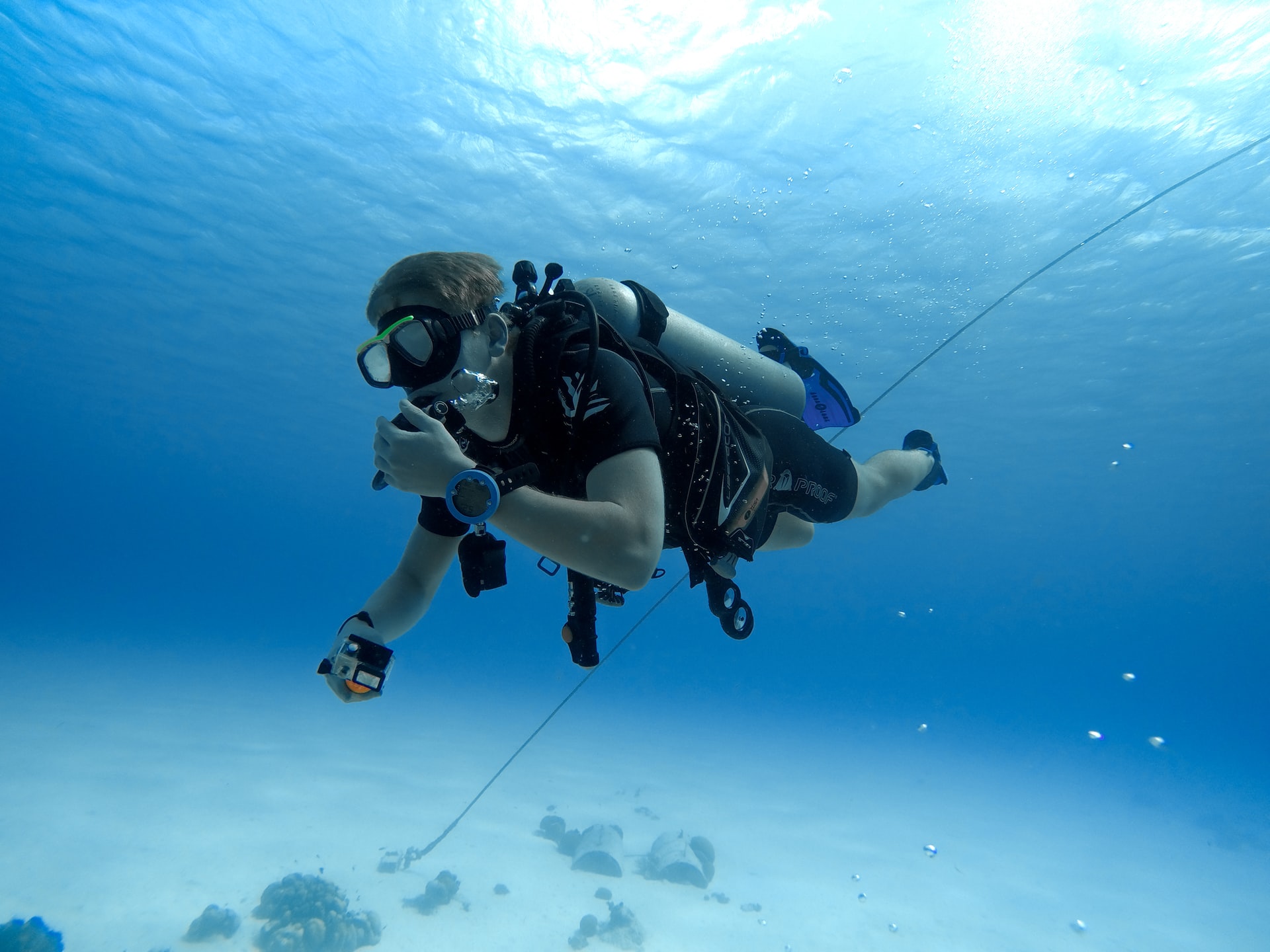
Are Scuba Divers Athletes? All the Facts (+New Competitive Forms)
-
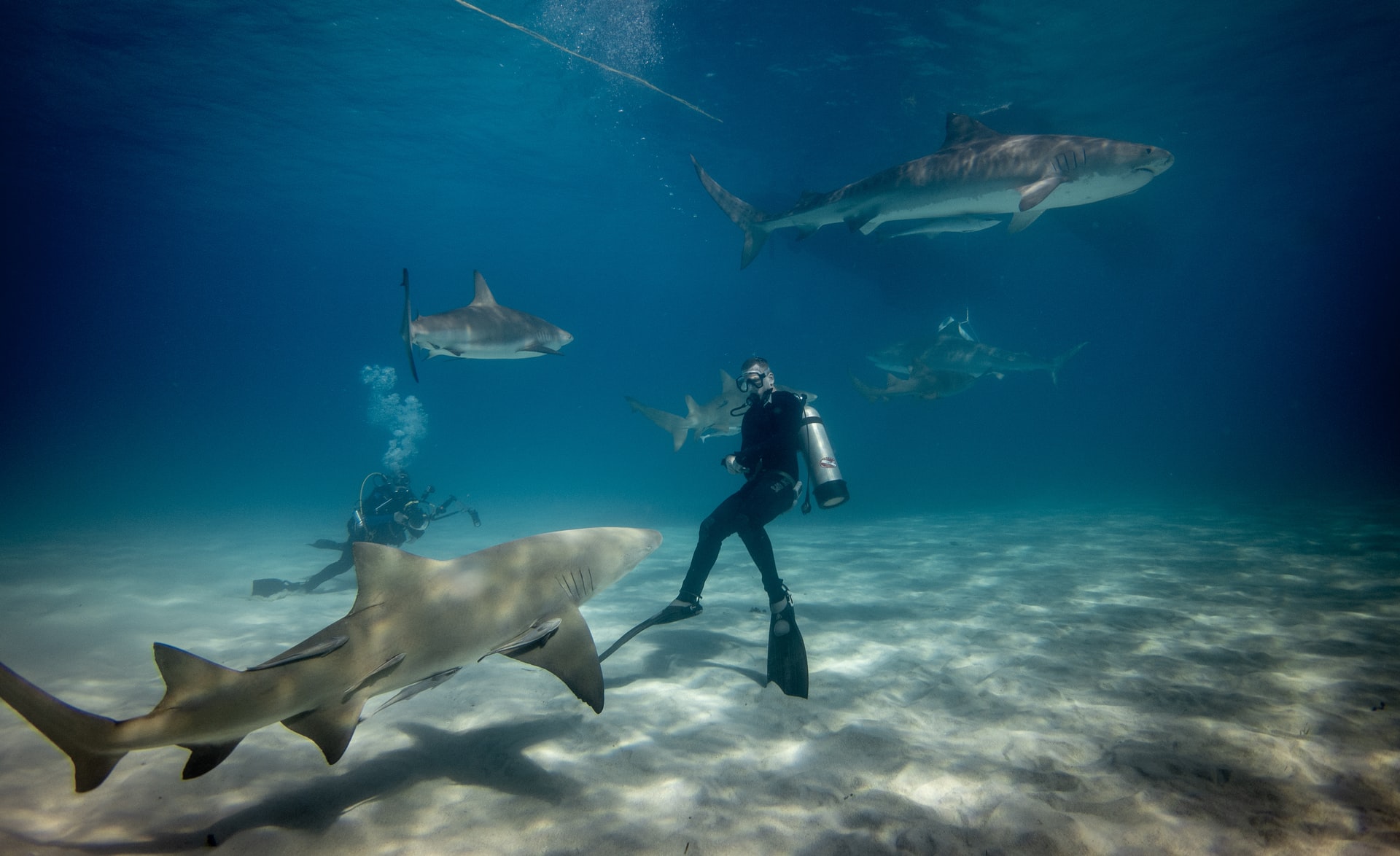
Are Sharks Scared of Scuba Divers? (What Every Diver Must Know)
-
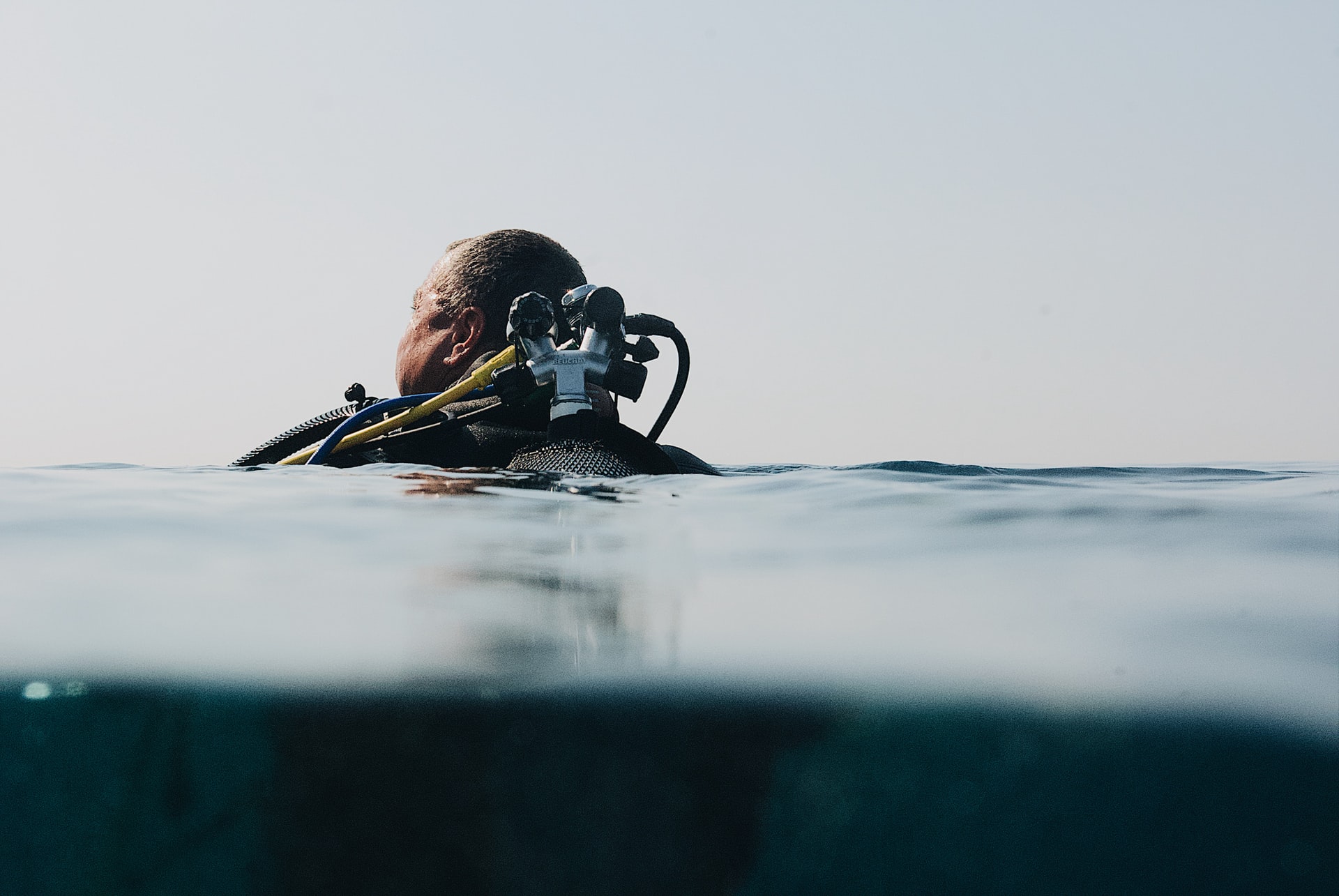
Who Should Not Scuba Dive? 17 Reasons (Every Diver Should Know)
-
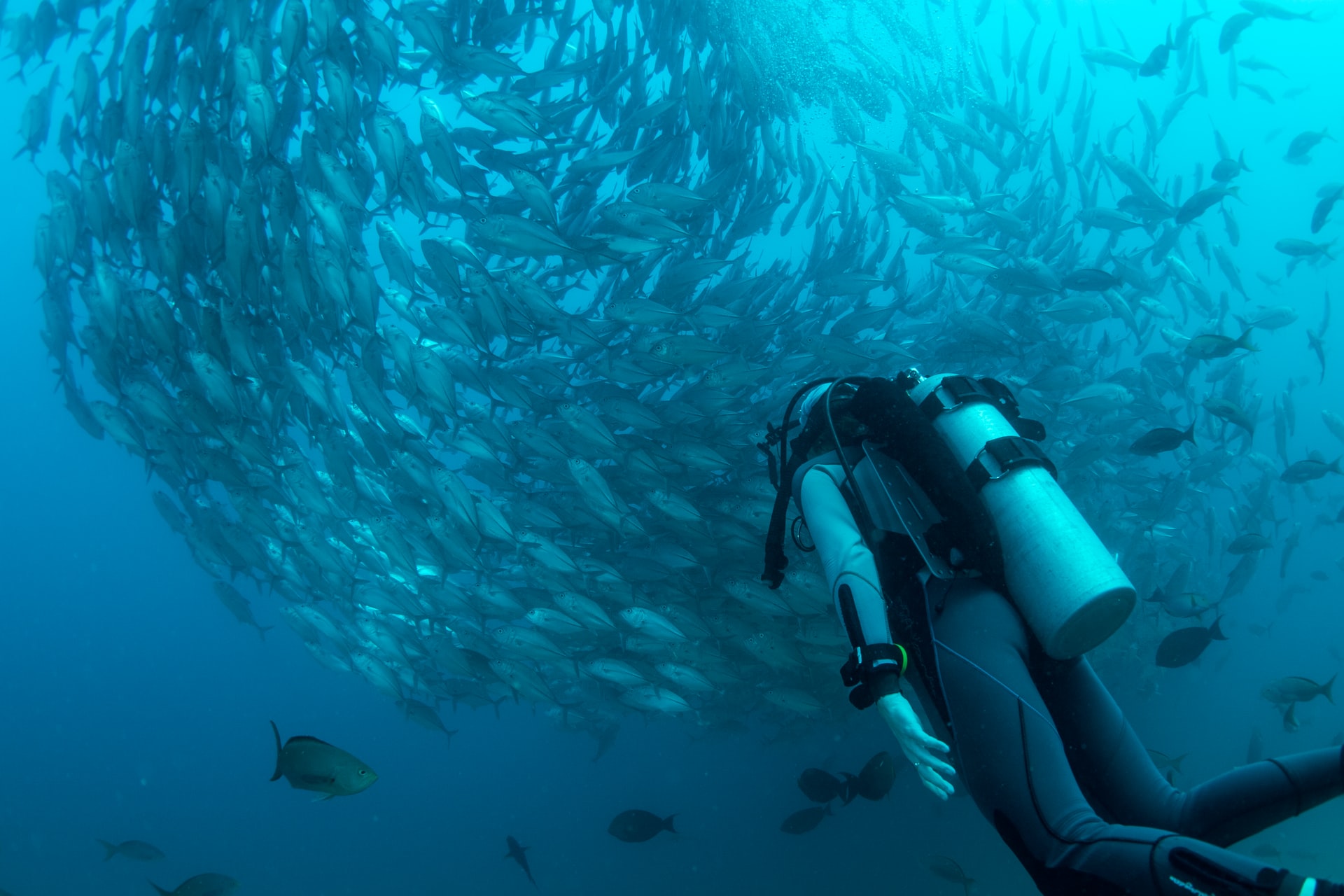
Should I Be Scared of Scuba Diving? 8 Common Fears (Debunked)
-
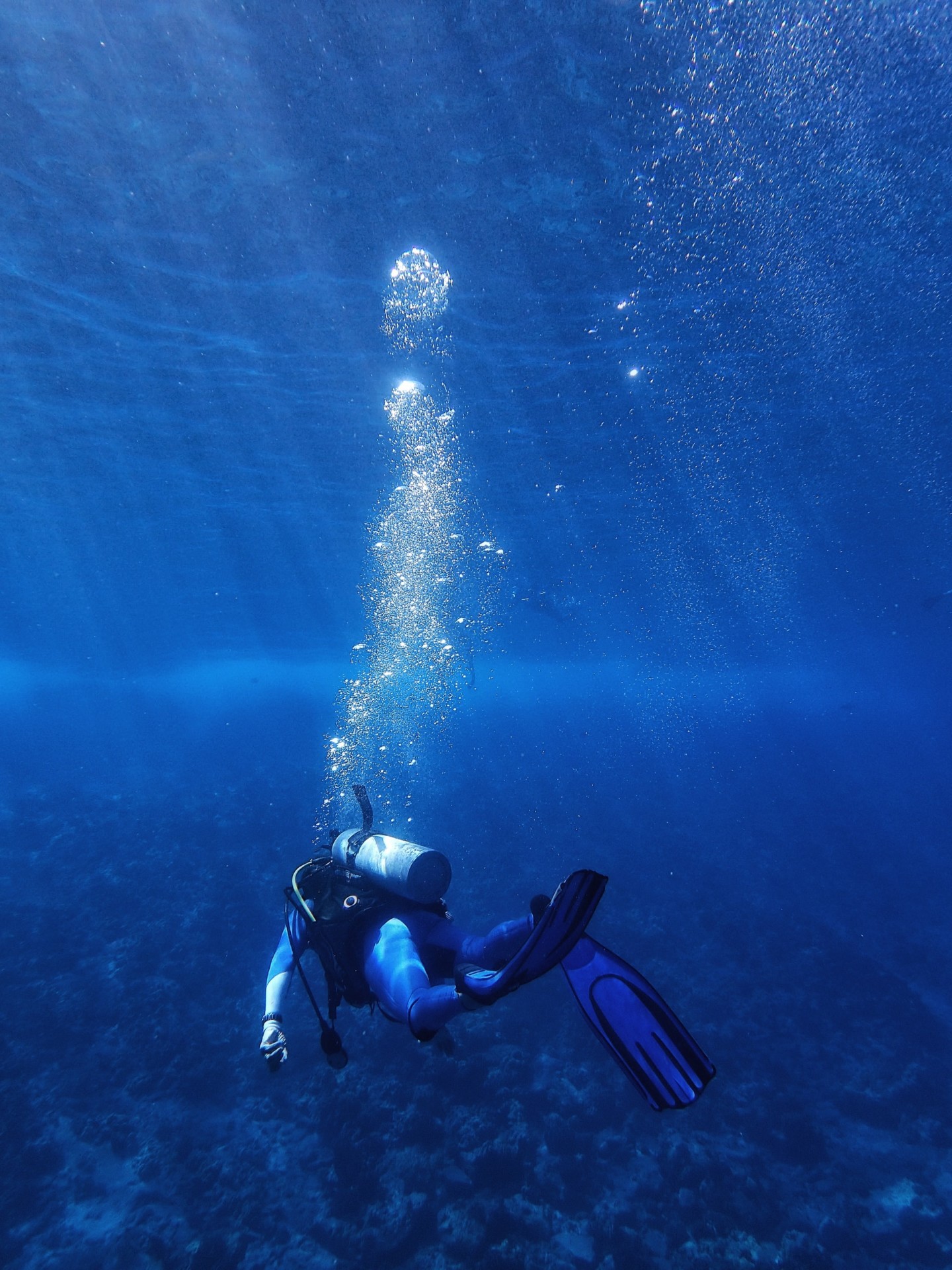
Why Do Scuba Divers Use More Air at Depth? (+4 Practical Tips)
-
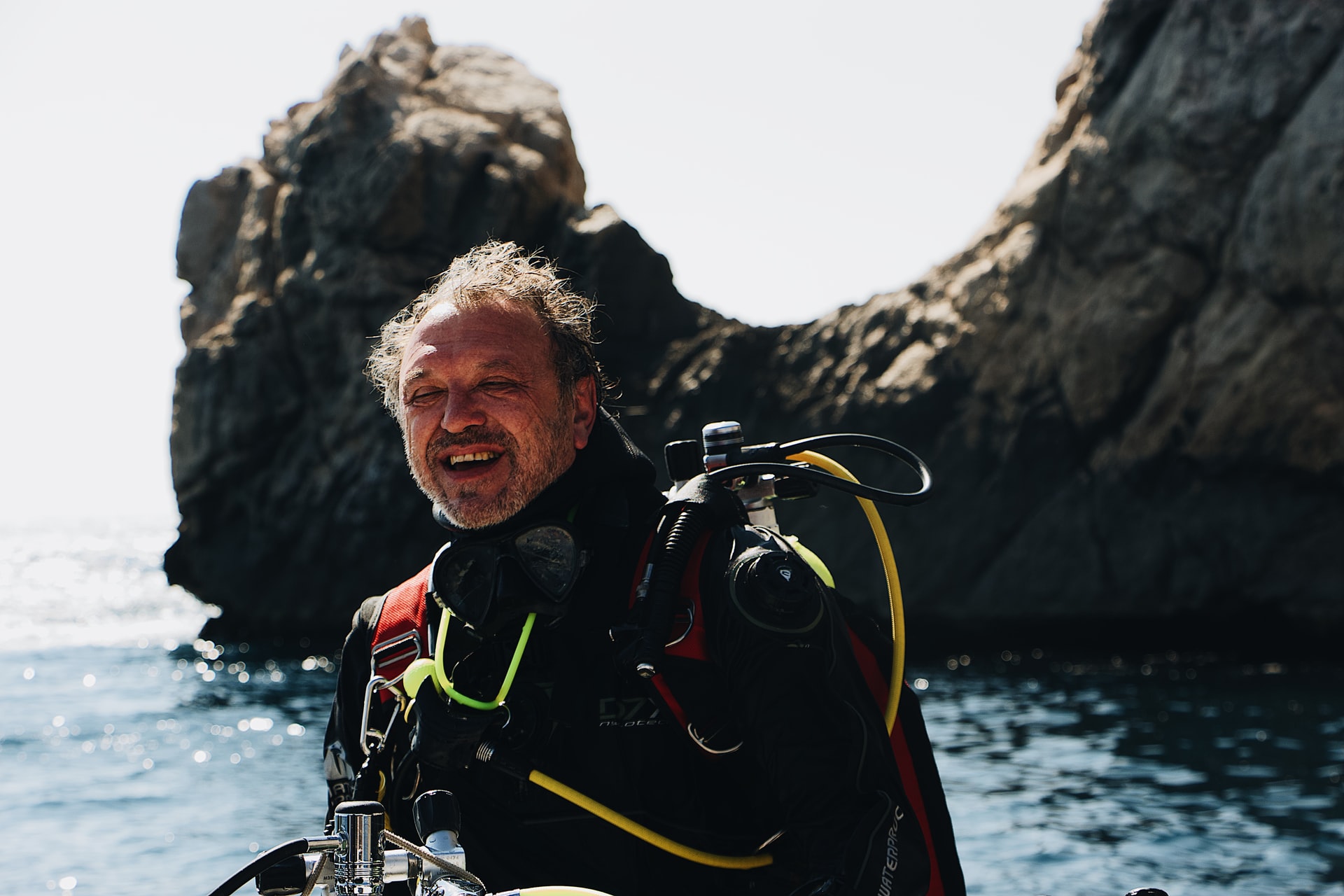
At What Age Should You Stop Scuba Diving? (+9 Tips for Older Divers)
-
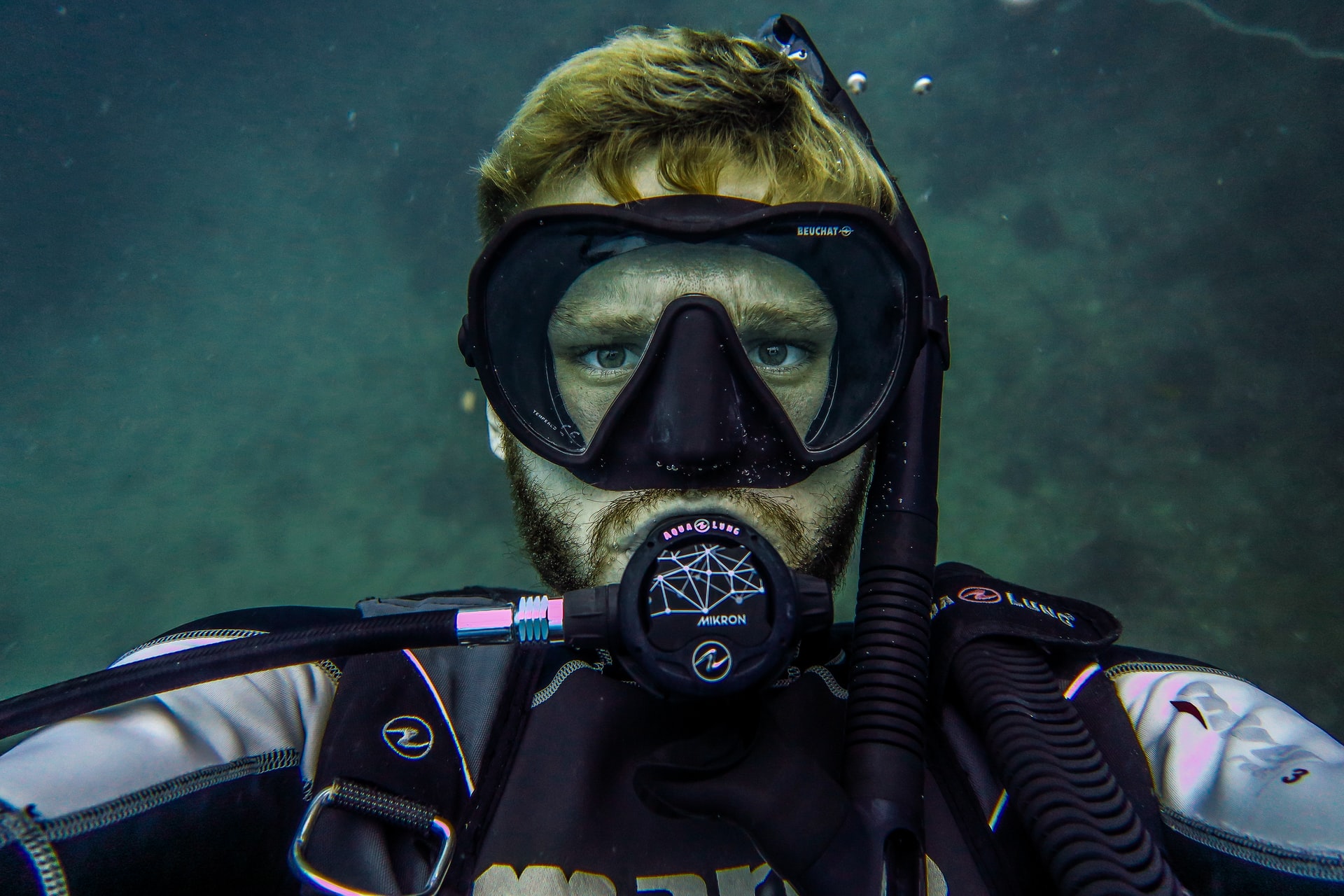
Should I Shave Before Scuba Diving? Crucial Facts (+9 Helpful Tips)
-
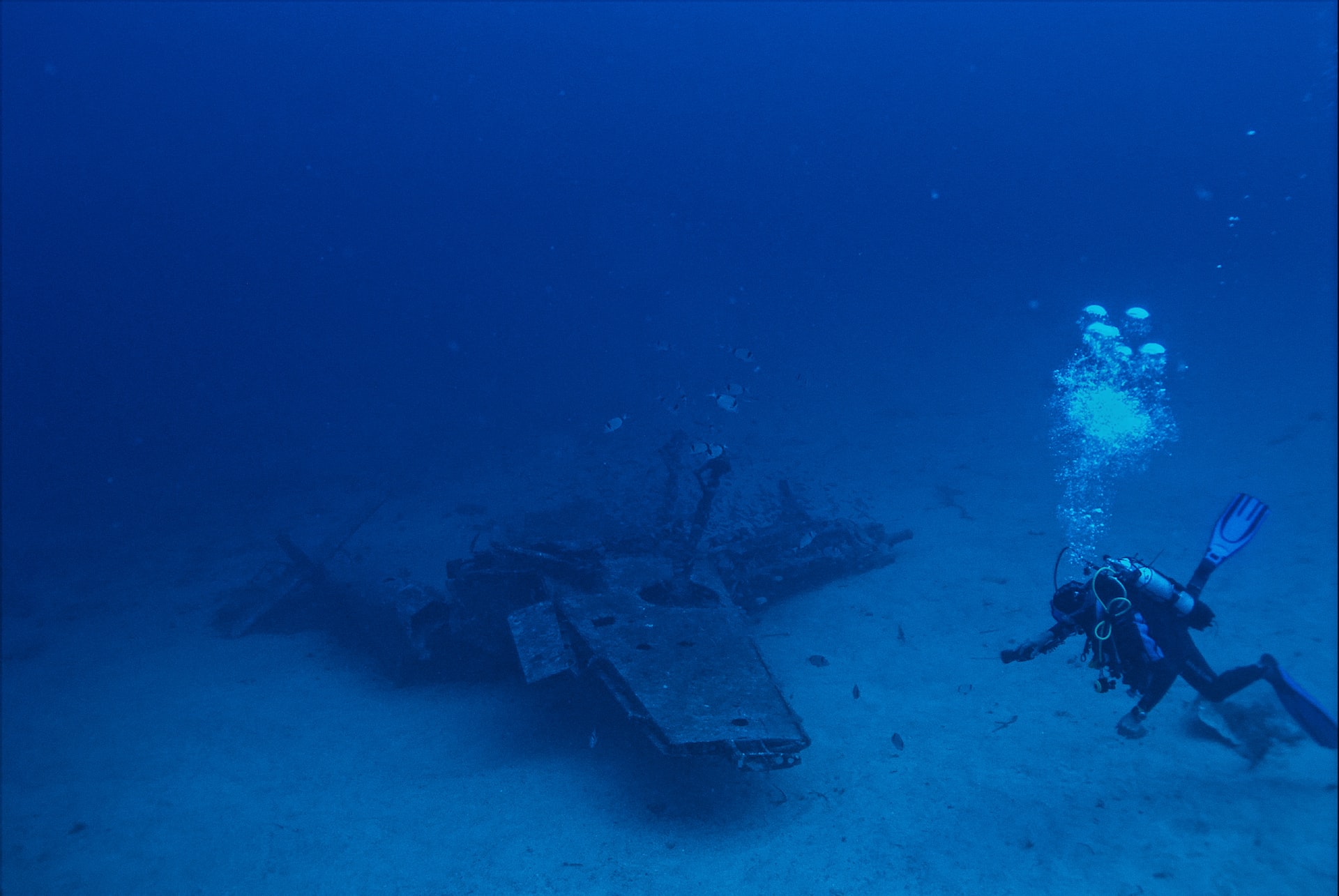
Why Do Scuba Divers Use Helium? (+Its Pros & Cons)
-
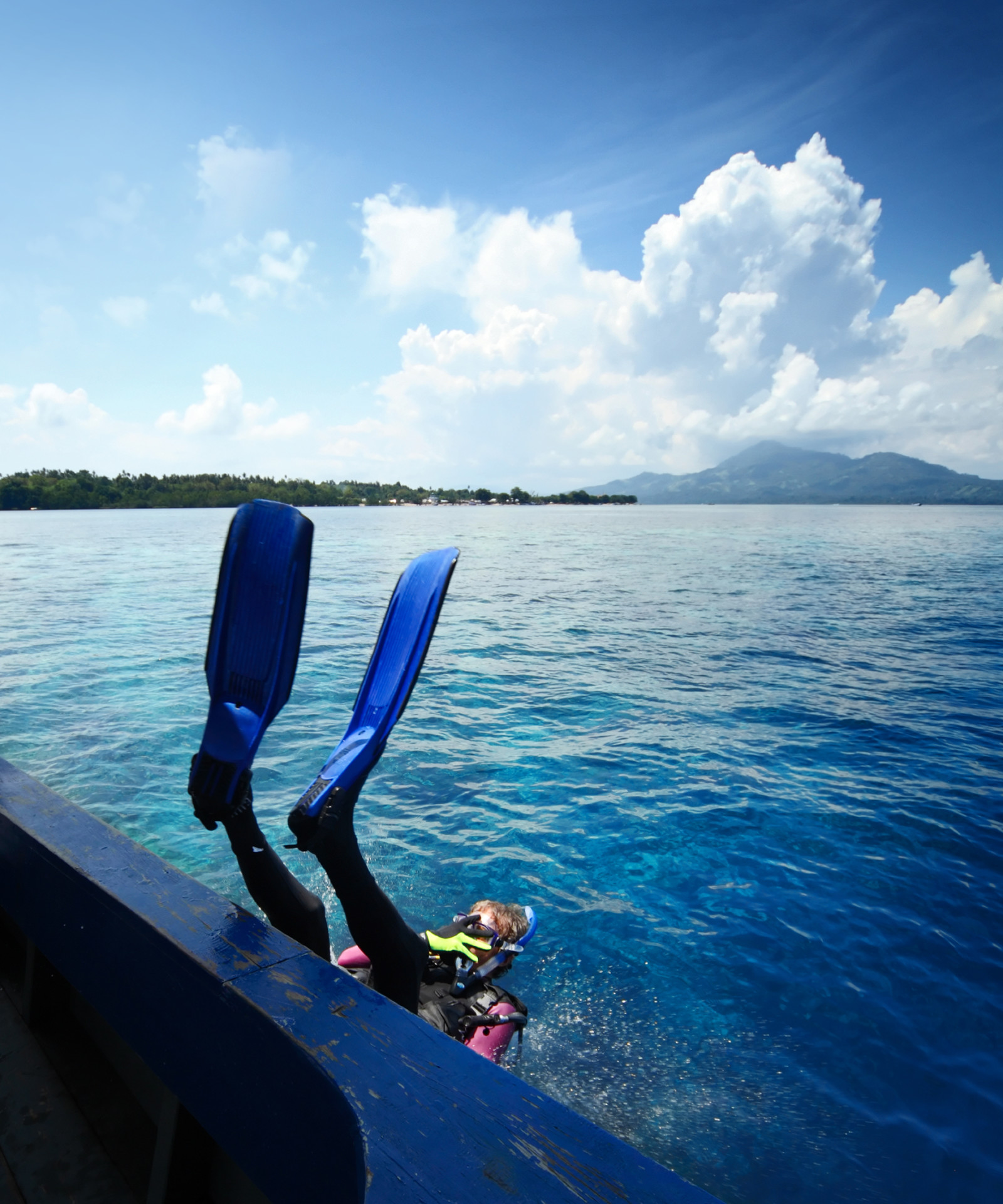
Why Do Scuba Divers Go in Backwards? (+3 Alternative Entries)
-
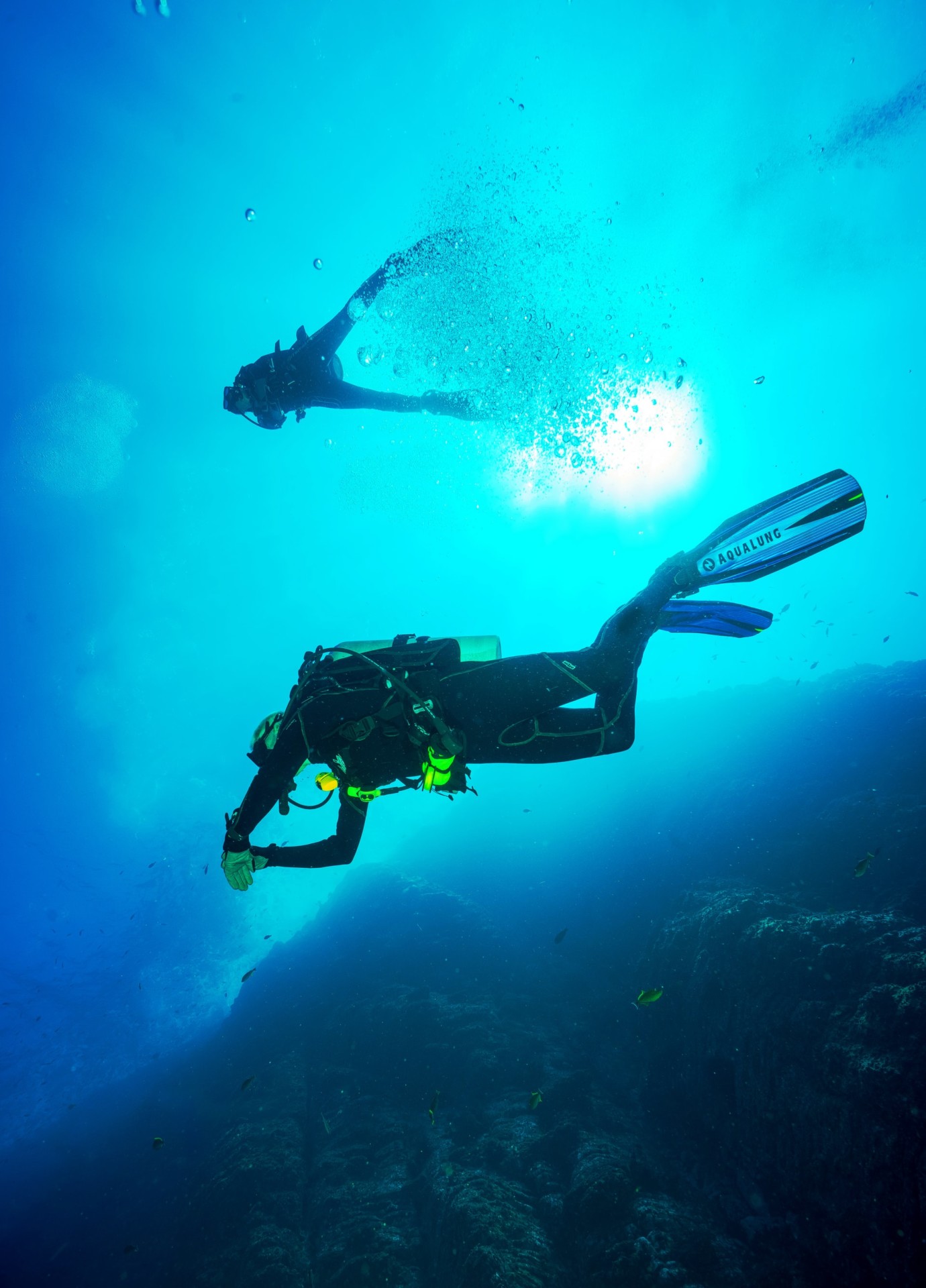
How Do Scuba Divers Sink and Float? (+Tips to Get It Right)

